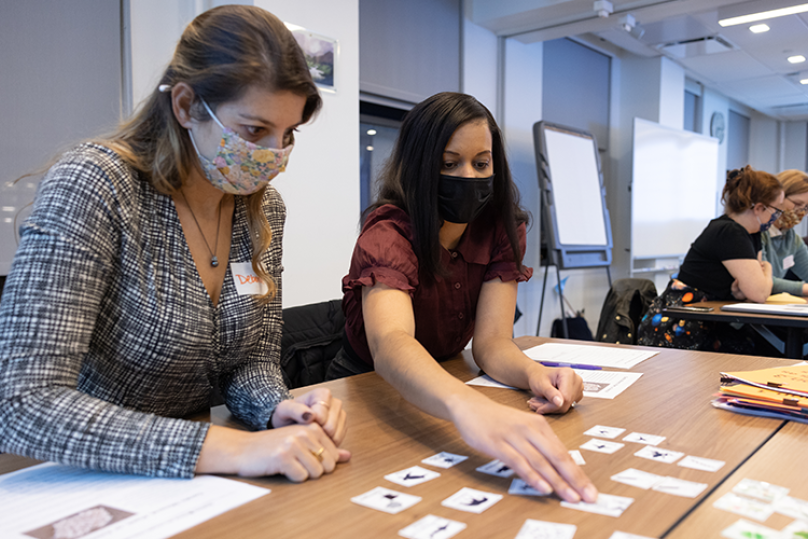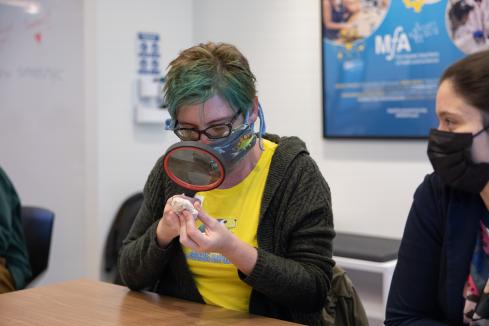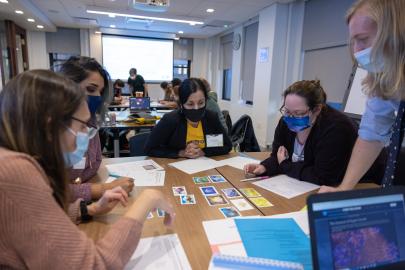

Coral reefs are one of the most diverse ecosystems on the planet. However, in the past three decades, over half of the coral population has been lost. In the MƒA mini-course “Investigating Global Coral Bleaching Using Real Data,” MƒA middle and high school life and environmental science teachers engaged in an NGSS data-driven investigation to learn more about the primary threats to coral reefs - identifying bleaching patterns and helping their students better understand the ecological importance of corals.
Teachers were introduced to the phenomenon of coral bleaching, a process that occurs when corals become white due to various stressors, such as changes in temperature, light, or nutrients. By using a small data subset, participants were taught how to predict the likelihood of coral bleaching around the globe. They also learned about the important role corals play, helping to preserve a high biodiversity within the marine ecosystem.
“Studying corals can be a bit of a mystery for students since it is not something they witness all the time,” said course participant and MƒA Master Teacher Denise Bou (Murray Hill Academy). "Not only did this course provide us with ways to have our students analyze data and predict coral bleaching events in the future, but it also helped deepen my own understanding on the subject.”
"Not only did this course provide us with ways to have our students analyze data and predict coral bleaching events in the future, but it also helped deepen my own understanding on the subject.”
The group also investigated the temporal and spatial patterns of global coral bleaching by analyzing and interpreting geographic data, both on the likelihood of bleaching and reports of actual bleaching events during the past thirty years.
“We discovered that climate change is causing an increase in the amount of global bleaching events. The Great Barrier Reef experienced three mass bleaching events in five years due to warming ocean temperatures,” said MƒA Master Teacher Deborah Reich (World View High School). "These MƒA opportunities are so important because they provide teachers with a chance to discuss ways to bring crucial environmental issues into our classrooms and, hopefully, inspire our students to take action.”
